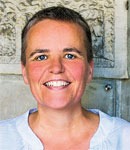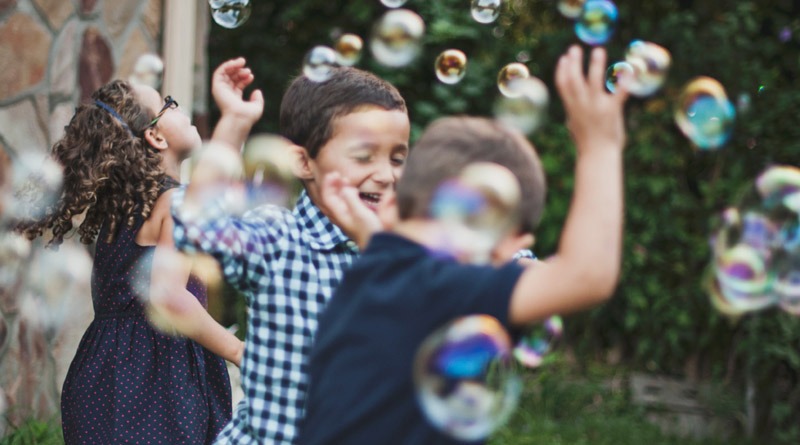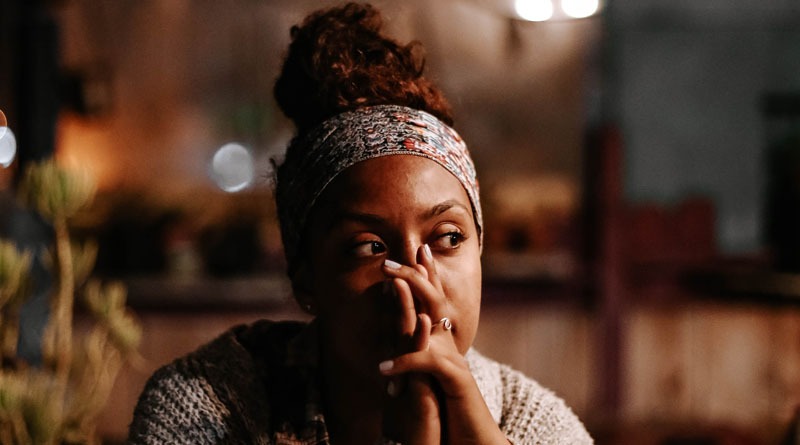
Psychotherapy Is Lifelong Self-Discovery on Both Sides: An Autistic Self-Advocate’s Perspective
By Angela Yael Blumberger
Navigating communication & language barriers
When Harold “Hackie” Reitman, M.D. asked me to write an article for his pad, I was electrified. It felt like I had three espressos. I was dissatisfied and a bit disoriented, not quite sure what kind of article Dr. Reitman would expect. That’s exactly how my autistic way of thinking is: in the context of where this question was asked, by whom and for what purpose and with further references. It’s kind of like a scavenger hunt. I put together a picture from individual clues and hope that it fits. I’m not sure if this way of thinking is typically atypical. That’s how I’ve been finding out all my life what exactly people want.
For me, this joy in the language has to do with the language barriers. In my life I have always followed the path where the greatest obstacles have been. These obstacles and barriers give me orientation. I really wanted to play with girls as a kid and I never understood what these games are for and what the content of these games is about. I loved my dolls, I fed them, combed them, dressed them in new clothes and drove them around in the doll’s pram. I never understood the game with the barbie dolls. Since my parents didn’t want to buy me Barbies, I had to organize them myself. Out of pity, a girl gave me a Barbie doll. In a short time, I had acquired a whole plastic bag full of barbies and clothes through trading and bartering alone, but I had never played with them. I was always looking for that “we” feel that the other girls seemed to have.
Empathy, no problem
I was very caring, so it was only natural that I would become a nurse. I acquired my general higher education entrance qualification by taking a second chance at education and studied psychology because I missed talking to the patients. I understood the hidden curricula in everyday clinical practice, less so outside of the hospital. Like many autistic women, I am hyper-empathic and hyper-sensitive, just picking up on other people’s unarticulated emotions and thoughts. I’ve always enjoyed working on it. I didn’t have a job, I carried out my calling, always with passion and dedication.
Authenticity
I cannot separate my work from my being. It is therefore difficult for me to describe my job as an activity. I first identified myself as having autism five years ago and was later diagnosed two weeks before my 51st birthday. Autism is not behavior; it is a way of being. I think autistic. I feel autistic. i love autistic. I am autistic. I am an autistic psychologist and psychotherapist. After my autistic burnout in 2019, I knew that I had to make major changes on a personal, content and structural level in my life in order to recover. For more than two years I have been working mainly with neurodiverse/neurodivergent people. I mainly perform ADHD and Autism Spectrum diagnostics in adults, especially women. Autism and ADHD manifest themselves completely differently in women than in men. There are studies that show that autistic girls want to be close to other girls much more than autistic boys to other boys. Autistic girls are also much more likely to use the pronouns “we” and “us” than autistic boys. Autistic girls and women therefore also show much fewer deficits in social communication and interaction and show less repetitive behavior patterns than autistic boys and men. As a result, they are also diagnosed less frequently.
Mimicry
As with many autistic women, my special interests are completely inconspicuous because they correspond to the expected stereotypes of women. Many autistic women work in social professions: nurses, educators, psychologists, teachers, doctors and social workers. They use an incredible amount of strength to fit in and still don’t make it and don’t know why for a long time. That’s why the diagnosis is a blessing for most of the late-diagnosed autistic people.
My therapeutic training is a body psychotherapeutic, systemic and hypnotherapeutic training. I didn’t need to mask my autistic goal- and solution-oriented thinking, it was part of the therapeutic training. My networked and systemic thinking as well. When I ask clients to close their eyes for hypnosis, they are not surprised. In this way, I was able to avoid and limit eye contact, which I felt was uncomfortable, in an unconsciously sophisticated way. I secured an autism-friendly work niche without knowing I was autistic.
Self-discovery
The diagnosis/diagnostics is like a transformative act of self-discovery. I experience this not only with myself, but also with my clients. The self-understanding changes profoundly. Our adaptability and our longing for belonging and social interaction changes our brain structures. I’m becoming more and more aware of how much this adaptability has alienated me from my autistic way of thinking and speaking. For 56 years I’ve been trying to train a one-lane neurotypical form of expression and speech from my eight-lane highway in the brain. But now I don’t have the strength to do it. It’s like vaulting a double quadriga.
The fact that I have been working almost exclusively with neurodivergent people for the last two years has contributed significantly to my remission of the autistic burnout. The autistic community has greatly strengthened and shaped me. However, this work and diagnostics with neurodivergent people is a bit like living in a parallel world, since there is a lack of understanding of neurodiversity, especially in Germany, or it is only rudimentary. Germany is a developing country in terms of neurodiversity.
Due to the autistic burnout, I forgot how to recognize faces. Like some autistic people, I have prosopagnosia. An inborn weakness for recognizing faces. There, too, I developed a hypermnesic memory over the years and lost it again through burnout. Neurodiverse clients resent me less than neurotypicals when I ask them for a selfie.
Recovery
I have invested a lot of time and money in psychotherapy training that was developed by neurotypical people for neurotypical people, and I am realizing more and more that this type of psychotherapy cannot be transferred one-to-one to neurodivergent people. Also, the term and definition of “trauma” let alone the treatment needs to be rewritten for neurodivergent people. Through my body psychotherapy training (Soma, a body-oriented trauma resolution) in which we want to heal through touch, I first became aware that my whole organism reacts differently than that of my colleagues. While my colleagues relaxed through the touch, they triggered stress in me. I was worse than better. It was through this training that I discovered my neurodiversity. Since I work very transparently and am far from pretending to know everything, I develop my own form of psychotherapy with each individual client. We go on a journey of discovery together.
I know very little about music therapy, but I use it on myself every day. It helps me to hear the right sound of my soul in the form of a piece of music, it’s like a kind of externalization. When I was so excited by Hackie’s request, it helped me to hear Jazzrausch’s “Dancing Wittgenstein” on repeat. Being a synesthete and feeling noise and music as a physical touch, so in a tactile way, I know how much violins I can take, or if it would be better to hear a cello solo. This way I can often regulate my shutdown.
Neurodivergent wellbeing also involves what I refer to as “walking the ADHD/autism.” Totally surrendering to being neurodivergent and doing what recharges our battery: hyper focus, stimming, hobbies, social media, special interests, Zen doodle, etc.
Affirming neurodiversity.
Many kind regards from Germany!
Angela Yael Blumberger

Yael Blumberger (she/her) is an autistic psychologist/psychotherapist with a private practice in Bremen and Cuxhaven/Germany. At the age of 51 she was diagnosed as autistic. She diagnoses adults for ADHD and/or autism, especially women. Born into a neurodivergent family, she is the mother of one daughter and grandmother of 3 nd grandchildren. That’s great. She loves the sea, nature walks, collecting shells, watching birds and listening to music. She likes to draw faces, is interested in medicine and psychology. She enjoys learning languages and is interested in culture. She has synesthesia and mild prosopagnosia. For more about her work: www.neurodivers-bremen.de




